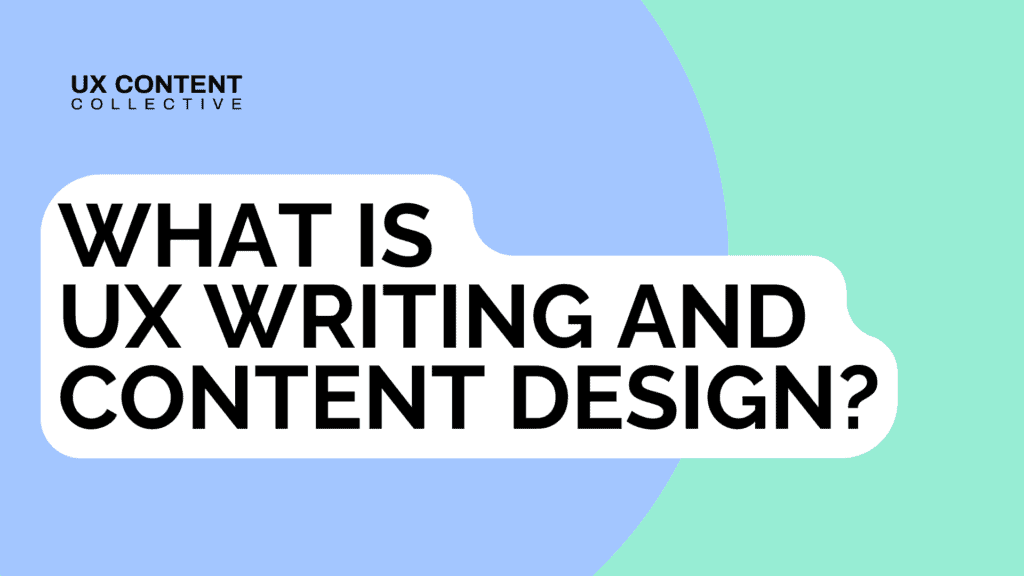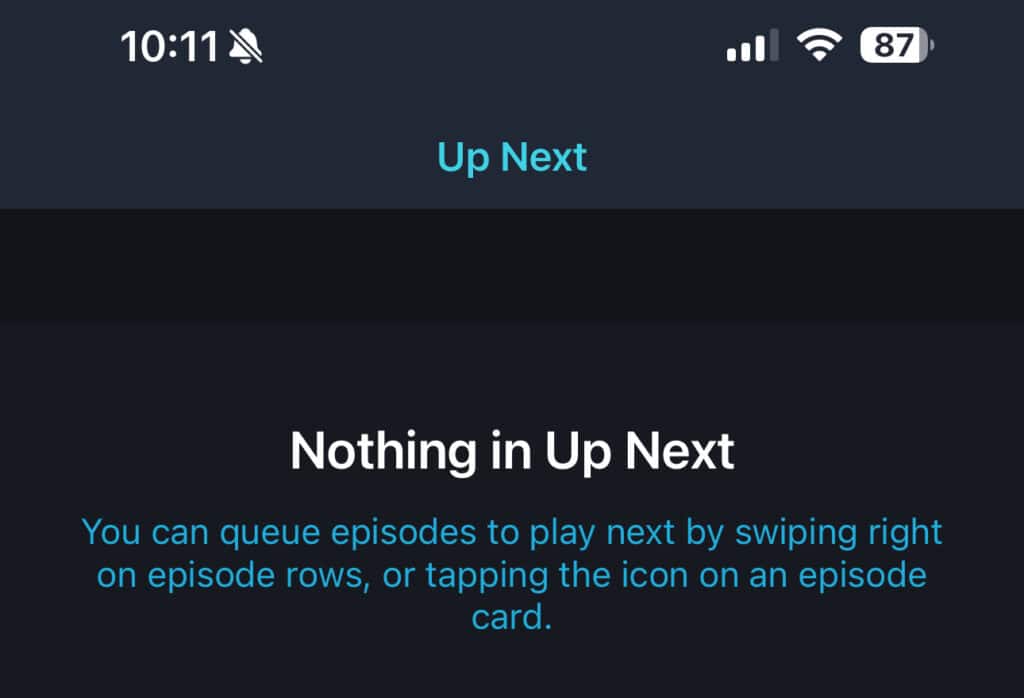

It is an essential part of product design that helps users navigate interfaces, complete tasks, and understand what’s happening within a product. Without UX writing, even the most beautifully designed software can feel confusing and frustrating.
While UX writing has been a core part of digital products for decades, many people—designers included—are still unfamiliar with what UX writers actually do. If you’ve ever struggled with an unclear error message, been unsure of what a button does, or felt lost in an app, you’ve experienced firsthand the impact of poor UX writing.
A well-placed, clear, and human-centered message can be the difference between a satisfied user and one who abandons your product. The role of UX writers is to ensure that every touchpoint in a digital experience is intuitive, accessible, and aligned with user needs.
In an era when design best practices often make apps look and feel the same, UX writing is a way to make products stand out.
In this guide, we’ll take an in-depth look at UX writing: what it is, how it differs from other types of writing, best practices, career opportunities, and how AI is influencing the field.
This is an area of significant debate. In the mid 2010s, companies like Meta, Shopify, Netflix, and Microsoft moved away from using the term “UX writer” to “content designer”. Meta even wrote up a large explanation.
In the 2020s, you’re going to see a large number of job ads that reference “content design”, but you’ll also see “UX writing” as well.
As we noted in our Salary Survey, most people in our industry refer to themselves as “content designers”. But it doesn’t cover everyone. Apple still uses the term “UX Writer”. and about one-third of the industry does as well.
After all…your success in any content role will depend on your ability to actually create and shape content in a user experience. No matter your title.
We do believe that it’s important to think of yourself as a designer—because that’s what UX writers are.
One more thing. Let’s clarify these 2 terms:
UX Writers write UI text, plus any other text needed to support the user as they interact with, or experience, a product. (If that doesn’t make sense yet, hang in there. It’s discussed in detail in this lesson.)
User experience writers write the text you see (or hear) in a user interface (UI). A user interface is where a person (the user) and a computer work together to get something done.
Depending on the needs of the company and the team, the specific types of writing will vary. The content a UX writer produces is called many things:
It’s the place where you (the user) and the computer (interface) meet and interact. For example, if an app is giving you instructions…

It’s the screens on mobile phones, tablets, and laptops. Like when you’re receiving a notification, or completing a task…

It’s all the boxes you fill in and the buttons you click or tap when you’re using any software product or website app…

It’s also the voice you hear when you’re talking to anything with a voice assistant, like any type of AI model or one powered by Google, Apple, and Amazon.
If you look at a mobile screen without user interface copy, it’s pretty easy to see how critical the words are to the design. In the early days of software development, graphic designers or software engineers wrote this text. Often, the writing was an afterthought and wasn’t very good. Users were frustrated. Products failed.
Take a look at this Spotify screen, with and without UI copy and UI design:

UX writing evolved during the 2000s as a distinct discipline whereby writers combine technical knowledge, communication skills, and empathy, in order to advocate for and guide users through digital experiences with clear and concise copy.
They understand exactly what users need to know at just the right moment to move through a screen, or complete a task.
The fundamental job of the UX Writer is help users with these three concepts at every single stage:
At any stage of an experience, UX Writers need to provide the right information for users. Whether that’s filling out a form, or adding details to an account, or searching for a movie to watch, users need the right information to do things quickly and efficiently.
Users need to understand how those individual instructions fit together so they can navigate around a product as a whole, and become proficient at it. Especially in a product with lots of screens and features, users need to know how all those screens and features work together.
If an app is confusing or lacks proper guidance, that’s called friction. Friction is anything that makes tasks harder or makes people feel confused, frustrated, and less likely to continue using the product.
Friction and frustration make people leave the app or site, abandon the cart, or go buy from your competitor.
UX Writers are interface designers. We look critically at screen designs and flows and think about how they might be easier for users to understand. The UX Writer evaluates the screens and might make suggestions to the product designer.
Finally, users require empathy at each stage of a product journey. That’s what UX writing can provide. Whether it’s acknowledging their frustration or celebrating success.
A UX writer’s job is to create content that improves the user’s interaction with a digital product. Unlike marketing copy, which aims to persuade, UX writing helps users accomplish tasks with minimal friction.
Writing UI text: Crafting the words that guide users through an interface, including button labels, error messages, onboarding flows, and confirmation dialogs.
Creating and maintaining style guides: Establishing voice, tone, and terminology standards that ensure consistency across a product or organization.
Participating in UX research: Working closely with UX researchers to conduct usability studies, analyze how users interact with content, and refine messaging based on insights.
Collaborating with product teams: Partnering with UX designers, product managers, and engineers to ensure content aligns with the overall design and user experience.
Structuring information: Organizing content hierarchies and navigation systems to make information easy to find and use.
Optimizing accessibility: Ensuring text is inclusive and readable for all users, including those using assistive technologies.
Testing and iterating content: Conducting A/B tests, gathering user feedback, and continuously refining content to improve usability.
Writing for conversational interfaces: Creating chatbot scripts, voice assistant responses, and AI-driven customer interactions.
Contributing to AI model training: Assisting in training AI-powered features by refining system prompts, structuring training datasets, and ensuring AI-generated content aligns with UX writing best practices.
Ensuring compliance with legal and ethical standards: Collaborating with legal and compliance teams to meet regulatory requirements while maintaining a clear and human-centered voice.
Product Managers (called “Product Owners” in the agile development world) are the bridge between business goals (including customer needs) and the technical developers who build the product. They write documents to articulate functional requirements, but don’t design the interface or decide how it’s coded.
Product managers typically come from technical backgrounds, though some come from design backgrounds as well. Depending on where you work, a product manager (PM) might be the “CEO of the product” and lead initiatives with a lot of authority, while others might be in more of a reporting role. Generally PMs tend to be viewed as the “captain” of the product team.
User Researchers dig into the user problem and the solution offered by the product. Their research often informs the product requirements by sussing out the user needs before the product is built. Later, User Researchers conduct usability testing to refine the designs and ensure clarity and ease of use for customers.
Designers ensure the product is delightful, easy to use, and meets all the requirements spelled out by the Product Manager. (The UX Writer is also a designer.) Designers create screen mock-ups and interactive prototypes for user testing and to define all the specifics of the interface Developers will build.
Executives from product, design, and engineering teams will often review the final designs and final coded products before release to approve them or request changes.
In Unit 6: Working with Teams, we’ll provide specific tips for creating successful relationships and handling feedback from each of these groups.
So those are the groups of internal people a UX Writer typically works with, and altogether they represent the product team.
To hear more about how you should work with these teams, hear from Sammie Spector, one of our expert graders:
Front-End Developers (also called Engineers) code the designs shown in mockups to create the actual product interface.
Back-End Developers ensure that the front-end interactions communicate effectively with the company’s databases and servers to deliver timely, useful results in the interface.
You’ll probably encounter other roles in the Engineering teams who may not be “developers”, per se. These might include heads of analytics, or even machine learning experts who work on AI features and models.
Microcopy is a term often used to refer to the small, functional pieces of text that appear in user interfaces. This includes things like button labels, error messages, placeholder text, and confirmation messages. While it may seem insignificant, microcopy plays a crucial role in guiding users and shaping their overall experience with a product.
The term “microcopy” gained popularity as UX writing became more recognized as a distinct discipline. It highlights the idea that even the smallest bits of text—just a few words—can have a significant impact on usability. Well-crafted microcopy can prevent user frustration, increase engagement, and reinforce a brand’s voice.
Despite its name, microcopy is not “small” in importance. It often determines whether a user successfully completes an action or abandons a process. For example, a poorly worded error message can leave users confused about what went wrong, while a well-written one can help them resolve the issue quickly and continue using the product.
Microcopy also helps establish trust. Consider security-related messages, such as those on login screens or payment confirmation pages. If the wording is unclear, users may feel hesitant to proceed. On the other hand, a reassuring and well-placed message can make them feel confident and secure.
It’s important to note that while “microcopy” is a helpful term, UX writing extends far beyond these small snippets of text. UX writers are responsible for a product’s overall content strategy, ensuring that every piece of text aligns with user needs and business goals. Thinking of UX writing as simply writing microcopy can downplay the strategic nature of the role.
Ultimately, microcopy is just one aspect of UX writing, but it’s a highly visible one. Whether it’s guiding a user through a signup flow or providing clarity in an error message, microcopy is where well-designed content makes an immediate impact.
Avoid jargon. Say exactly what the user needs to know in as few words as possible. Clarity is key to ensuring users understand what action they need to take.
Bad: This action is not permitted due to account-related restrictions.
Good: You need admin access to change this setting.
Users should always know what to do next. Every piece of UX writing should move them forward in their journey.
Bad: There was an issue with your request.
Good: Try refreshing the page or checking your internet connection.
Terminology, tone, and structure should be the same throughout the product. If a button says “Continue” on one screen, don’t switch to “Next” on the following screen.
Error messages should be helpful and reassuring, not robotic or blameful.
Bad: Invalid password.
Good: Oops! That password doesn’t match. Try again.
Users should never be left wondering why something happened or what they should do next.
Bad: Account error.
Good: Your account has been locked after multiple failed login attempts. Reset your password to regain access.
UX writing should be readable, inclusive, and usable for all users. Avoid complex language, ensure text contrast is sufficient, and provide alternative text for screen readers.
Great UX writing is never one-and-done. Test different versions, gather user feedback, and refine content over time.
By following these best practices, UX writers can create experiences that are clear, helpful, and user-friendly.
The UX writing job market has grown significantly in the past decade as companies recognize the value of clear, user-friendly content. While UX writing was once a niche role, it is now a critical function within product teams at major tech companies, startups, and even traditional businesses undergoing digital transformation.
Many well-known companies actively hire UX writers and content designers to improve their digital experiences.
Meta, for instance, has one of the most well-established content design practices in the world with hundreds of UX writers and content designers. Google, Microsoft, Apple, Amazon, Airbnb, Spotify, Uber, and other major tech companies hire UX writers.
Of course, these are only the large companies. Many medium and small companies hire UX writers. In a recent wrap-up of job ads, these companies were searching for UX writers and content designers:
We’d suggest searching on job boards like LinkedIn or Indeed to find the most up-to-date job ads for content designers.
A career in UX writing can evolve in multiple directions, depending on an individual’s interests and expertise.
Entry-Level UX Writer (0-2 years experience)
Mid-Level UX Writer (2-5 years experience)
Senior UX Writer (5-8 years experience)
Content Design Lead / Principal UX Writer (8+ years experience)
Director of Content Design / VP of Content
Of course, these are just examples. We’d recommend having a look at Figma’s career levels for UX Writers, which are a great start!
As digital experiences become more central to daily life, demand for UX writers continues to rise. According to job listings on LinkedIn and Indeed, there are hundreds of openings for UX writers globally, particularly in North America, Europe, and Australia. Emerging fields like AI, fintech, and healthcare technology are also creating new opportunities for content professionals who understand digital design.
For those looking to break into UX writing, the key is building a strong portfolio, learning design principles, and networking with professionals in the field. With the right combination of skills and experience, UX writing offers a rewarding and lucrative career path.
Our Content Design Salary & Industry Survey provides a clear picture of what UX writers and content designers earn across different regions and experience levels.
The global median salary for content designers falls between US $81,000 and $100,000 per year. However, this is a worldwide figure, and can differ greatly based on location. The United States is the leading area with a median salary range of US $121,000 – $140,000. The highest reported salary we recorded was over US $400,000!
Many UX writers also receive bonuses, stock options, and additional compensation depending on their company and role.
United States: UX writers earn a median salary of $121,000 to $140,000 per year, with many senior professionals exceeding this range.
United Kingdom: Salaries are slightly lower, with a median range of $81,000 to $100,000.
Canada: UX writers typically make between $101,000 and $120,000 per year.
Australia: Similar to Canada, with salaries averaging $101,000 to $120,000.
Experience is one of the biggest factors in salary levels. These are median ranges, so many people can actually earn more:
Entry-level UX writers (0-3 years): Typically earn between USD $80,000 and $100,000 per year.
Mid-level UX writers (4-6 years): Salaries increase to USD $100,000 to $120,000.
Senior UX writers (7-10 years): Can earn USD $120,000 to $140,000 particularly at large tech companies.
As companies continue to invest in user experience, the demand for UX writers is increasing. Businesses across tech, finance, healthcare, and e-commerce are actively hiring content designers to improve digital products. This upward trend means salaries will likely continue to rise as the industry grows.
For UX writers looking to negotiate salaries, this data is a strong starting point. Companies are recognizing the value of well-crafted content, making this an exciting and lucrative career path.
Recently, Chelsea Larsson (head of content design at Anthropic, which created the Claude LLM) told us that engineers at Expedia actually sought out UX writers to help them understand how to create AI tools powered by GPT:
At this point you may think that if an LLM can do all the writing, what work is there for a UX writer to do?
As it turns out…a lot. Language models only work well with context. They need instructions (a “prompt”) to get a good quality output. And if the prompt or instructions they receive are low-quality, they will produce low-quality content.
Which means any prompt you use for a language model needs to have the context and principles for good UX writing.
Just think about the way a human would write some text for a UI. You need to know things like:
We want to repeat the most important point here: AI is only good at giving you text if it has context for your problem.Just like we use Figma, or Miro, or any other type of tool, AI is a tool we use in order to solve complex design problems.
No matter what type of AI tool comes along (and there will be many) the best practices of design will remain constant. As a content designer, you’ll need specialized knowledge and context to shape and guide the responses LLMs output.
Artificial intelligence will always need someone to analyze it, assess it, qualify it, and make sure it adheres to the guidelines and rules we establish.
Real talk: Just like roles and titles differ by company, certification can mean different things to different hiring managers or organizations. At the end of the day, the basic concept is to certify or validate your skills on paper.
Think of certification as a skills stamp on your “career passport.” As you travel from role to role, a certification showcases your core competencies at a quick glance.
We get a lot of messages asking questions like, “Will this certification get me a job?” and the short answer is “no.” Only you can get yourself a job, which means your skills, your work history, your attitude, your ability to solve problems, and your ability to articulate design decisions all matter more than a stamp on your LinkedIn profile. Your portfolio matters as well.
A certification is a tool to help you along that journey, but it’s not going to automatically get you hired as a content designer.
A certification is a way to learn specific skills the industry demands
If you’re entering a new industry, or you’re aligning your career into an adjacent field, you’re going to have a lot of areas where your knowledge isn’t up to scratch. A certification can be a way to make sure you get a “crash course” in relevant required skills.
UX writing involves crafting the text that appears within digital products, such as buttons, menus, error messages, and onboarding screens, in order to guide users through an interface. The goal is to ensure clarity, usability, and a seamless user experience by providing concise and helpful content.
While copywriting primarily aims to persuade or sell, UX writing focuses on helping users navigate and interact with a product efficiently. UX writers create microcopy that supports user tasks, whereas copywriters often produce marketing content like advertisements and promotional materials.
UX writing plays a crucial role in product design by enhancing user comprehension and satisfaction. Clear and intuitive microcopy can reduce user errors, improve accessibility, and contribute to a more engaging and effective user experience.
If you’re interested in a career in UX writing or content design, you should know that people enter this career from a range of different backgrounds:
We’ve helped thousands of people around the world enter the UX writing and content design industry, and then grow their professional skills.

Have any questions about our courses? Interested in training your team and want to know more? Let us know—we're here to help and give you everything you need.
Dhanushka, Customer Success Manager

Explore our content design and UX writing training:
Get our weekly Dash newsletter packed with links, regular updates with resources, discounts, and more.
